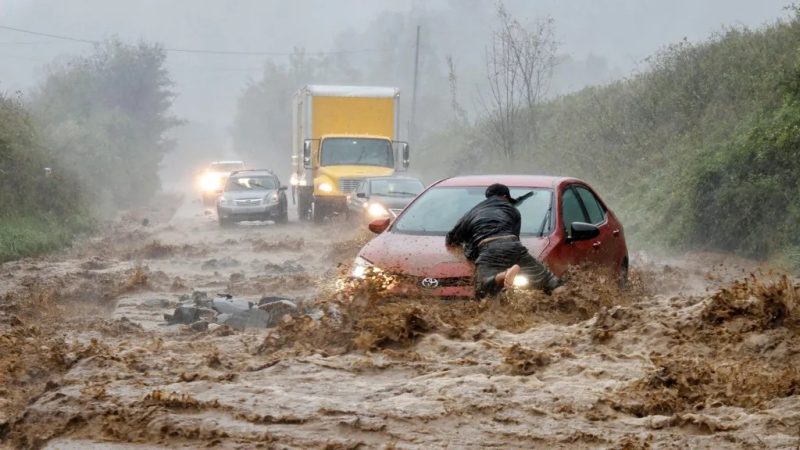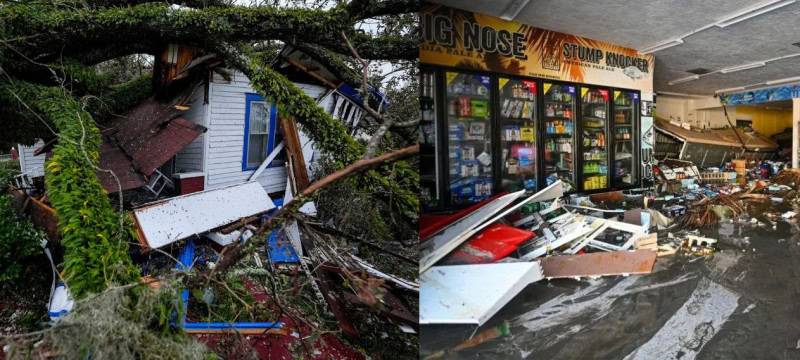Tropical Depression Helene caused life-threatening flooding across much of the Southeast U.S. on Friday, resulting in at least 43 fatalities. The storm inundated neighborhoods, triggered mudslides, threatened dams, and left over 3.5 million homes and businesses without power.
Initially striking Florida’s Big Bend region as a powerful Category 4 hurricane with winds of 140 mph (225 kph) on Thursday night, Helene created a scene of chaos with overturned boats, fallen trees, submerged vehicles, and flooded streets. By early Friday afternoon, it had been downgraded to a tropical depression, with maximum sustained winds of 35 mph (55 kph), according to the National Hurricane Center.
Read more: 46 Drown During Hindu Festival in Bihar
Despite its downgrade, Helene continued to produce heavy rainfall, leading to catastrophic flooding and prompting thousands of water rescues throughout the impacted states. In Unicoi County, Tennessee, over 50 individuals were rescued from the roof of a hospital after floodwaters swamped the area, making it impossible for ambulances to evacuate patients.

In Cocke County, Tennessee, Mayor Rob Mathis ordered the evacuation of downtown Newport due to concerns about a potential dam failure. Although initial reports suggested a “catastrophic failure” at the Walters Dam, it was later clarified that the dam had merely been breached without any major failure. The Tennessee Emergency Management Agency confirmed that the dam, located just across the state line in North Carolina, had not failed.
Rutherford County officials in western North Carolina warned residents near Lake Lure Dam to evacuate, citing an imminent risk of failure. However, by 8 p.m., it was reported that engineers had assessed the dam and deemed it no longer at risk.
The extent of the damage in Florida became clearer after dawn, revealing significant impacts from an 8 to 10 feet (2.4-3 meters) storm surge that displaced mobile homes. In Tampa, emergency personnel conducted 78 water rescues, and many roads were left impassable due to flooding.

Officials had urged residents to follow evacuation orders, with National Hurricane Center Director Michael Brennan warning that the storm surge was “unsurvivable.” Some residents, however, chose to remain. Ken Wood, a ferry boat operator in Pinellas County, regretted not evacuating after experiencing the storm at home with his cat, Andy.
Pinellas County Sheriff Bob Gualtieri reported that emergency responders were unable to answer numerous calls due to the severe conditions, with at least five fatalities confirmed in the county. Florida Governor Ron DeSantis reported two deaths in the state, while Georgia’s Governor Brian Kemp noted 15 storm-related fatalities. North Carolina’s Governor Roy Cooper reported two deaths there, and South Carolina officials cited at least 19 fatalities.
Helene was noted to be unusually large for a Gulf hurricane, though forecasters emphasized that a storm’s size does not equate to its strength, which is determined by maximum sustained wind speeds. Prior to landfall, Helene’s tropical-storm winds extended up to 310 miles (500 km), in contrast to Idalia, which had winds extending 160 miles (260 km) just hours before its landfall last year.









